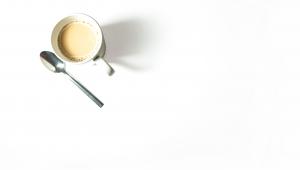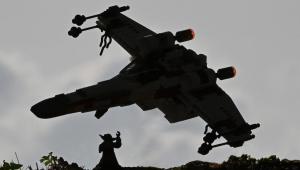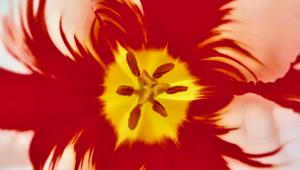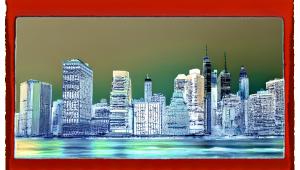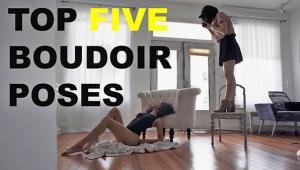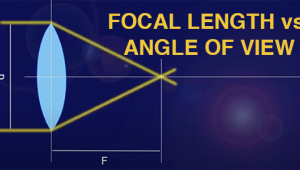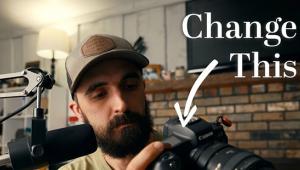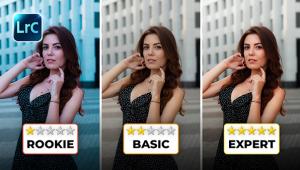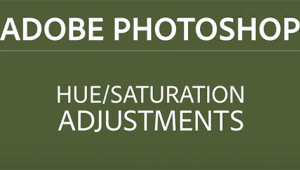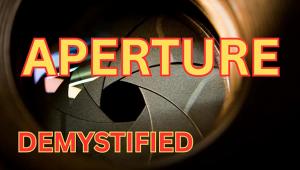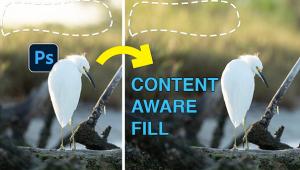Fashion Statements; Digicams With Style
| Early digital cameras looked anything like cameras. Can anyone forget Apple's QuickTake, a.k.a. the AMC Pacer of digicams? With increasing competition from cell phone cameras, savvy manufacturers have started to figure out that style sells and are assembling a runway of digicams that are not just as pretty as a picture, but make pretty good pictures, too. |
|
 |
4.0 megapixel $399 4x Optical Zoom Auto-Connect USB |
| This fashion image
was made of model Liz Tillman using the Olympus Stylus 400 Digital. It would
not ordinarily be my first choice for this kind of shot, but the camera's
metering and TruePic technology handled the backlighting well. While I was
stuck at a slow shutter speed, which resulted in some camera shake, I kinda
liked the softness it added to the photograph. I could have used the Stylus'
built-in flash and did for one shot, but the photo looked "too filled,"
a shadow behind Liz's head and wasn't all that sharp (due to camera
movement again) to boot. Oh yeah did I mention it had redeye, too? Image
made in Normal Program mode at f/5.2 with 1/6 sec (OK, so I needed a tripod)
and ISO 125. |
|
Sliding
Doors |
|
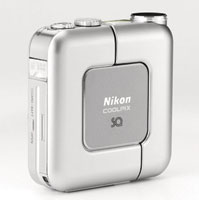 |
3.1 megapixel $449 3x Optical Zoom Cool-Station Cradle |
| The Nikon SQ proved
to be an ideal traveling companion when car shopping; I dropped it in my
jacket pocket. I really needed the SQ when test driving this 1948MG TC with
24,000 original miles. Image made with Nikon SQ, at f/4.8 with 1/140 sec
and ISO 70. Even though the image was captured at 1600x1200 resolution (2016x1512
is available) I was able to make an 11x14" print with just a bit of
tweaking in Photoshop CS. Impressive performance from a small camera. Equally
impressive is the way Nikon's matrix metering handled the dappled
lighting on the church parking lot where we pulled over to change drivers. |
|
Geek
Chic |
|
 |
4.0 megapixel $349 Fixed (39mm equiv) Lens Direct Print Capability |
Whenever I was using the SD10, people came up to me and asked questions, proving photography is the universal language. I made three images of Mary at the mall next to this "hand" graphic using the Canon SD10 Digital Elph: One at ISO 100, this one at ISO 200, and a slightly noisier one at ISO 400. Overall I like the image quality of the ISO 100 better, but the additional sensitivity at ISO 200 produced more ambient fill. Exposure was at f/2.8 with 1/60 sec using the SD-10's dust speck-sized flash. |
|
Always
In Fashion |
|
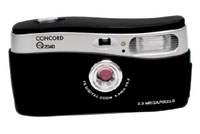 |
2.0 megapixel $99 Fixed (48mm equiv) Lens 1.5" LCD Screen |
Want to make the time spent waiting in line for lunch go fast? While waiting for a table at Red Robin, I grabbed the Concord Eye-Q 2040 and started taking pictures of Mary next to an antique gas pump when I saw this Statue of Liberty replica decorated for the holiday. The Eye-Q 2040 did a surprisingly good job under these low-light conditions with less noise than was produced by more expensive, higher resolution digicams tested. |
|
Style
On A Budget |
|
 |
3.3 megapixel $349 3x Optical Zoom Close Focus: 4.3" (macro) |
While testing the DiMAGE E323, it was my constant companion going to the hardware store where I used it to photograph plumbing fixtures that were in different parts of the store so Mary and I could do side by side comparisons. It also came along when I was able to get a private tour of a fire truck factory in Loveland, Colorado. The unusual lighting here was easily corrected in camera by the DiMAGE E323 and no corrections were made to the image you see here. |
|
Digital
Style Why Do You Need A Stylish
Digicam The Spring Collection |
|
- Log in or register to post comments











